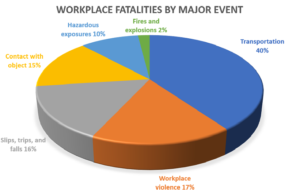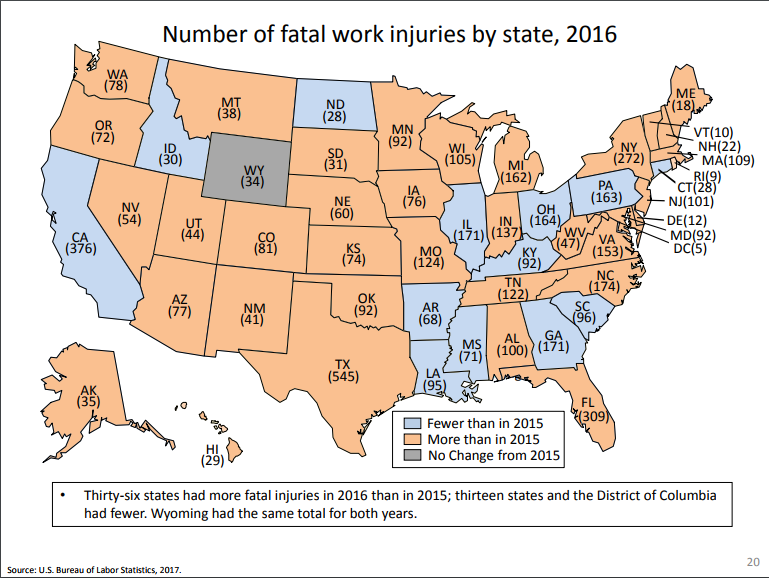Each December, the Bureau of Labor Statistics publishes the final statistics workplace fatalities for the previous year. The 2016 statistics and chart package came out last month; we took a moment to look them over and there were few surprises:
- The overall fatality rate in 2016 was about the same as it was for the previous 8 years, an average of 3½ fatalities per 100,000 full time equivalents per year. With a slight uptick to 3.6 in 2016, it may be the beginning of a bad trend, or just normal statistical variation.
- The total number of workplace fatalities in 2016—5,190—was the highest it had been since 2008, a consequence of more people working.
- The gig economy continues to take its toll, with the fatality rate for the self-employed at 13.1. That is over four times higher than the fatality rate for employees, which is 3.0 fatalities per 100,000 full time equivalents per year.
- There are six major types of events that result in workplace fatalities, and the distribution of fatalities across them was pretty much the same in 2016 as earlier years: Transportation held steady at about 40%; three event types—workplace violence, contact with objects, and slips, trips, and falls—each were in the 15% to 20% range; exposure to hazardous materials and environments remained steady at about 10%; and fires and explosions remained the lowest category, at less than 3%.

- Homicide remained the leading cause of death on the job for women.
- The five most dangerous occupations remained logging, commercial fishing, flying, roofing, and trash collection.
Although not in the chart package, BLS data shows that the safest occupations in the U.S. remained mathematician and librarian.
